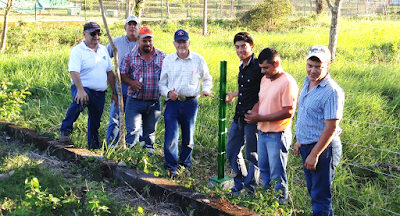Host Highlight: Universidad ISA (Dominican Republic)

Source: ISA As part of the USAID-funded Farmer-to-Farmer (F2F) program in the Caribbean basin, the Agriculture & Food Security (AFS) team at Partners of the Americas has been leading a project to increase climate change resilience across several vulnerable communities in the Dominican Republic. In order to carry out these efforts, Partners works with a wide array of host organizations ranging from agricultural cooperatives, nonprofits, as well as local universities. Among the multiple Dominican institutions of higher learning with which we work is worth highlighting one: Universidad ISA. In 1962, this institution was founded as the Instituto Superior de Agricultura or ISA. ISA was established by a partnership between USAID, the Asociación para el Desarrollo, Inc. (APEDI) and the national government of the Dominican Republic. The university is located in a large rural campus just outside of Santiago de Caballeros, the country’s second largest metropolitan area. Universidad



